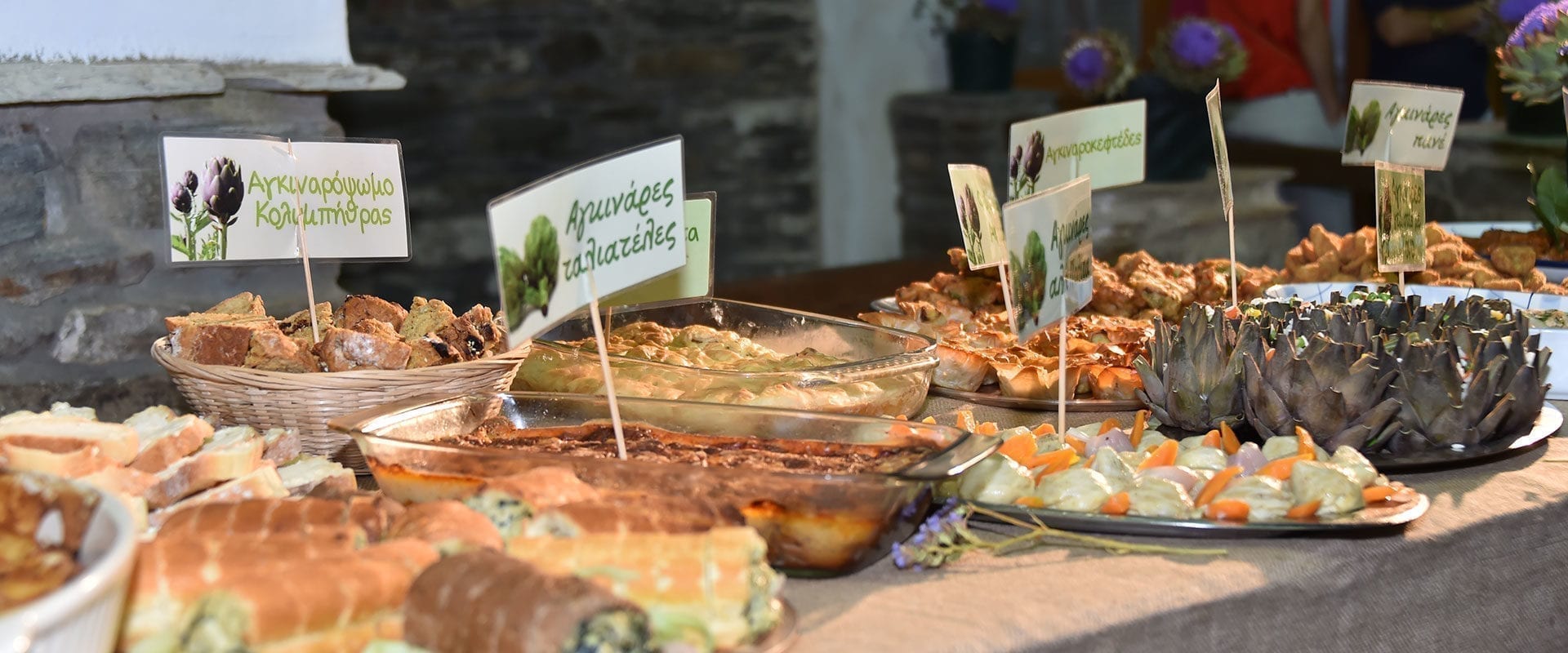
Local Products
Tinos island is agricultural and livestock. The agriculture is not very efficient because the soil is mountainous and there is often a north wind. A little fertile land for crops in in the plain of Komi and near the gorges. The little ground is supported by terraces that support fields three to five meters wide, the stairs or steps.
Barley, oats and a little wheat are produced, which are ground into windmills and watermills. The vine is also cultivated in the roots protected from the north. Varieties of cultivated grapes are the “river” or “wine grapes” from which the must is made and the “black rivers” that give the black must. Other species are rosacea, antirites, plane trees, strawberries, chamomiles, kampariana, rhododendrons, aetonychia, begleria, beetles, bovidomatics, whiteflies, and Cretans.
Tinos is famous for its extremely delicious wines. Local varieties such as “Potamisi”, and “Koumariano” but also Assyrtika, Malagouzies and Mavrotragana, give wines with a very characteristic and special teroir.
Even the island has one of the most famous beers in the world, NISO.
Traditional and seasonal products such as unripe legumes, honey, vegetables (a typical example is the famous artichoke made in various ways and various synthetics), cheeses, cold cuts, wild herbs and mushrooms, fresh fish and local meats of excellent quality are composed of it. The ways of preserving the products (salted, pickled, pastries, etc.) are genuinely authentic and traditional.
From the must they make petimezi.
From the marcs, the strofylia or raki is made with a special process.
Olive cultivation is found in parts of roofs. The olive trees are called agrelia. Depending on the way they are prepared, olives are called “stabbed”, crumpled, bathed, salted.
Figs are an important product for Tinos. The kontolata, the glykornioi, the arkounes, the kavourakia, the xinosyka or Basilicata are only some of the varieties of the productions. They are collected in August and spread on the stretcher to dry them in the sun.
At the same time, vegetables are grown in irrigated orchards. Αlso fruit trees, lemons, oranges, a few pears, almonds, mulberries, plums and pomegranates are grown for the needs of the inhabitants.
Livestock farming is limited to domestic sheep and goat farming and cow farming. A pig at one side of the field is also necessary. It is slaughtered in the pig carcasses and prepared in various ways to meet the needs of the family.
In addition, poultry and pigeons are bred.
Tinian food is always accompanied by local cheese. The villages of Oxo Meria and Falatados are famous for their cheeses. Types of cheeses: round cheeses, or balls, slag cheeses, boiled cheeses and mizithra or kopanisti.
The pork is prepared in different ways for the winter: They make gizzards, sisers, or siglina, sausages, louzes, salted.
In Tinos, fine honey is also produced in the traditional way, but there is no systematic beekeeping.
